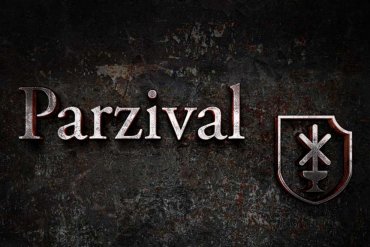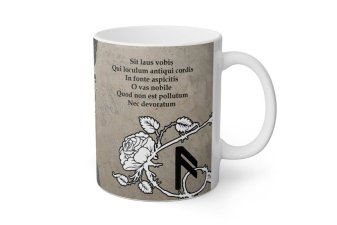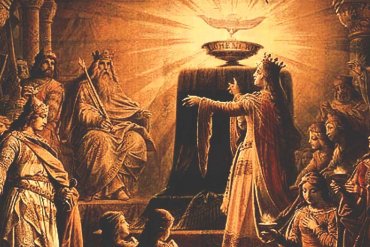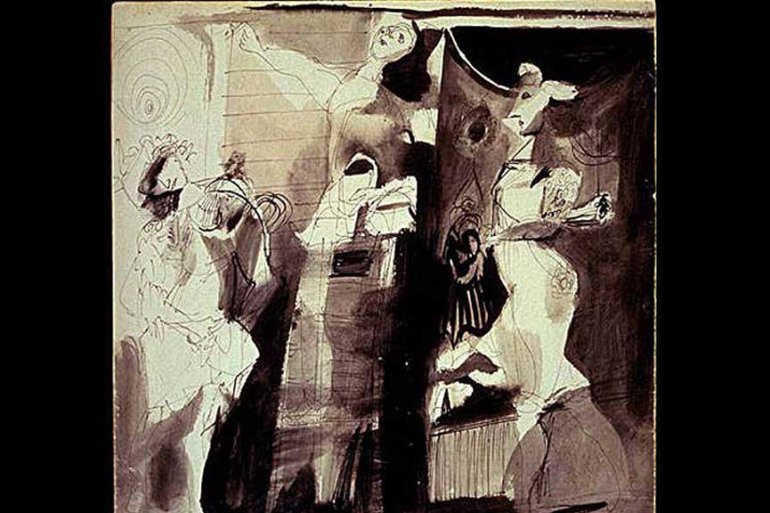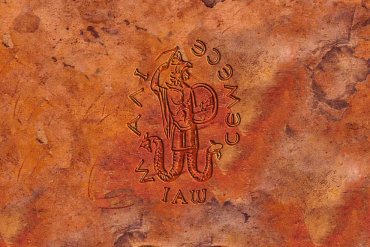The story of the Holy Grail is a rich and complex narrative set in the context of Arthurian tradition and the medieval world of knighthood and chivalry. These romances reflected the lifestyle and aspirations of an elite, the men and women who dominated the feudal world. The narratives produced during this relatively brief period have a universal appeal, and subsequent readers have interpreted them in different ways. Whatever conclusions, they...
Teutonic legend. a music drama by Richard Wagner: composed 1877-82; premiere 1882 a male given name: from Old French words meaning “pierce” and “valley” comparable to Percival a knight of King Arthur’s court who sought the Holy Grail a German mythical military division What lies beneath the noun Parzival? In Parzival, Wolfram von Eschenbach tells us that the Grail is a stone that was brought from heaven to Earth...
Like in all ancient Norse myths codes and messages are hidden within. Mainstream scholars like us to believe that these myths are just simple stories to entertain or to describe natural phenomena our dumb forefathers were too ignorant to understand. But these tales are like riddles and intellectual challenges to be solved and contain real wisdom and knowledge. Ms. Jessie L. Weston, after more than thirty years of study, wrote a little book entitled From Ritual to Romance (London: Cambridge […]...
In almost all myths all over the world the same theme reoccurs. The twelve knights, twelve tribes, twelve heroes etc. In his last and longest dialogue (Laws), Plato teaches: There are twelve feasts to the twelve Gods who give their names to the twelve tribes. Also in early christianity, the image of twelve disciples with the Godman figure at their center echoes the twelve constellations which revolve in the heavens...
Unveiling the Enigmatic Wisdom: Deciphering the Esoteric Meaning of “Sit laus vobis Qui loculum antiqui cordis In fonte aspicitis. O vas nobile Quod non est pollutum Nec devoratum In saltatione antique spelunce. Et quod non est maceratum In vulneribus antiqui perditoris” In the labyrinthine world of ancient texts and cryptic symbols, there exists a riddle (Hildegard von Bingen) that has tantalized the intellect and stirred the soul for generations. It...
Trying to understand one of the many hidden histories and layers within Maier files is trying to understand the Grail quest and its influence on many even nowadays. The Arthurian legends are an obvious start. The fabulous stories of King Arthur and the Grail are currently so well known that they extensively researched and remarked upon by many different authors and researchers. However numerous individuals are absolutely ignorant, as we were, that the importance and starting point of these stories […]...
The mysterious relic —which could be at one and the same time a chalice, a book, a stone, or a person— was seen as existing both on the earth and at a remove from it. In the poem The Later Titurel, it hovers above the world, untouched by human hands and supported by angels. In the Perceval of Chrétien de Troyes and the Parzival of Wolfram von Eschenbach, it is...
In the early 1180s, as the shadow of Saladin lengthened over the Holy Land, a nobleman with Merovingian ancestry, Philip d’Alsace, count of Flanders, commissioned the greatest poet of the age, Chrétien de Troyes, to do a French reworking of a strange tale about a poor knight, the son of a widow, who attains the kingship of the Holy Grail. Philip d’Alsace Philip supposedly found the tale in an ancient...
Picasso, the impressive artist-magus of modernism, constantly had an intense feeling for the intrusions of the spirit realms. As a kid he was considered by several of his mates to possess supernatural capabilities, such as mind-reading as well as prophecy. When he travelled to France, Apollinaire, Georges Bataille, Eric Satie, Max Jacob, Jean Cocteau among others initiated him into a sophisticated occult tradition. Occult Picasso Picasso widely used esoteric themes in his work. From time to time he painted himself […]...
Carl Jung had written extensively on Abraxas. In his 1916 book called The Seven Sermons to the Dead, Jung called Abraxas a God higher than the Christian God and Devil that combines all opposites into one Being. Abraxas was a polymorphous world spirit which permeates — or even encompass — the very fabric of existence. Abraxas is … a thousand-armed polyp, coiled knot of winged serpents … the hermaphrodite of...
Within the historical tapestry of World War II, the shadowy Division Parzival, guided by the mysterious Gudrun, captivates with its enigmatic origins and spiritual undertones. Julius Evola’s essay, intertwined with the profound chivalric traditions, sheds light on the esoteric aspects of the Grail and the symbolic representation of the woman as “intelligence.” Division Parzival and Gudrun Steeped in mystery, Division Parzival emerges as a military unit with a unique purpose,...
In Sanskrit, skull cups are known as kapala, and they are generally formed from the oval section of the upper cranium. They served as libation vessels for large numbers of deities, which were mostly wrathful. However, they are also seen with gods such as Padmasambhava (India), who holds the skull cup, which is described as holding an ocean of nectar that floats in the longevity vase. This Elixir was at the heart of many secret orders and was one of […]...


